How Can We Study Learning with Geovisual Analytics Applied to Statistics?
Abstract
:1. Introduction
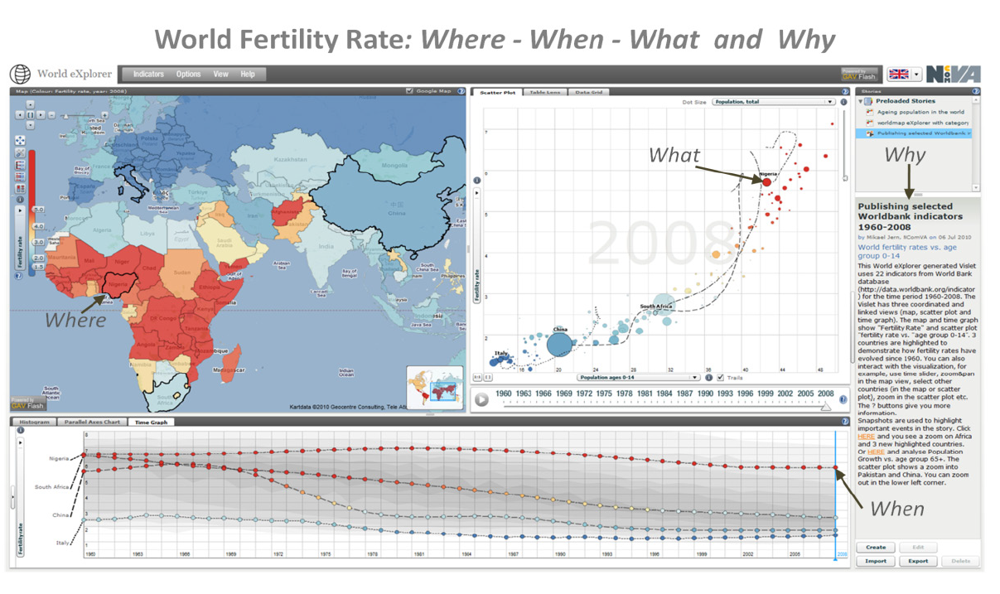
2. Purpose and Aim
3. Studying Learning with Geovisual Analytics
3.1. Dominating Theories and Approaches Within the Field
3.2. The Socio-Cultural Theoretical Perspective
4. Implications for Research Design when Using a Socio-Cultural Perspective
4.1. An Example of Examining Learning Within a Socio-Cultural Perspective When Using a Geovisual Analytics
4.1.1. The Study’s Aim and Issues
4.1.2. The Geovisual Analytics Used in the Study
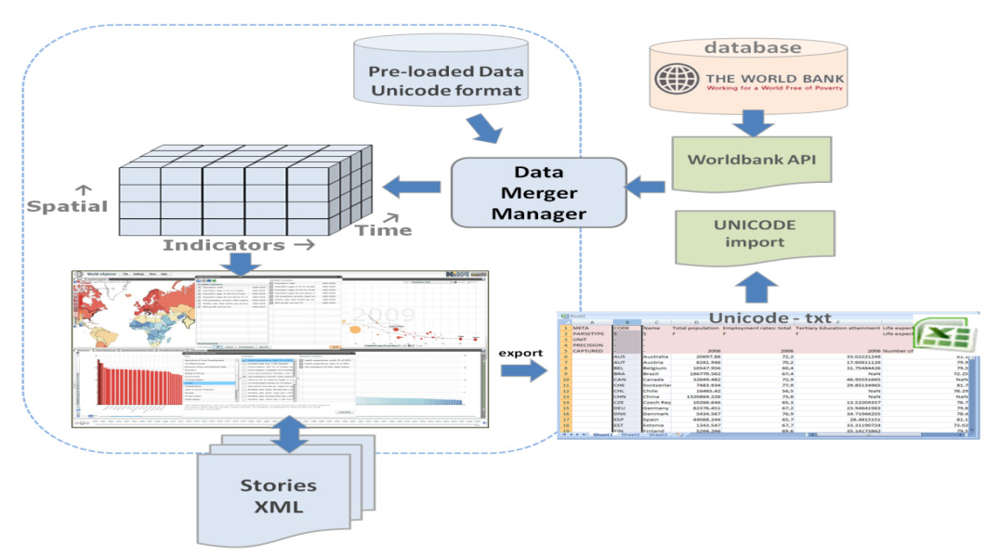
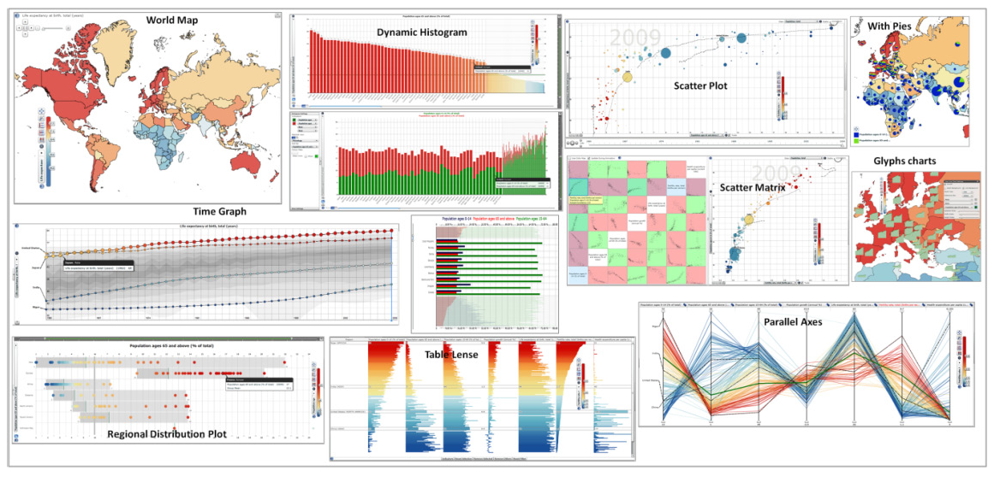
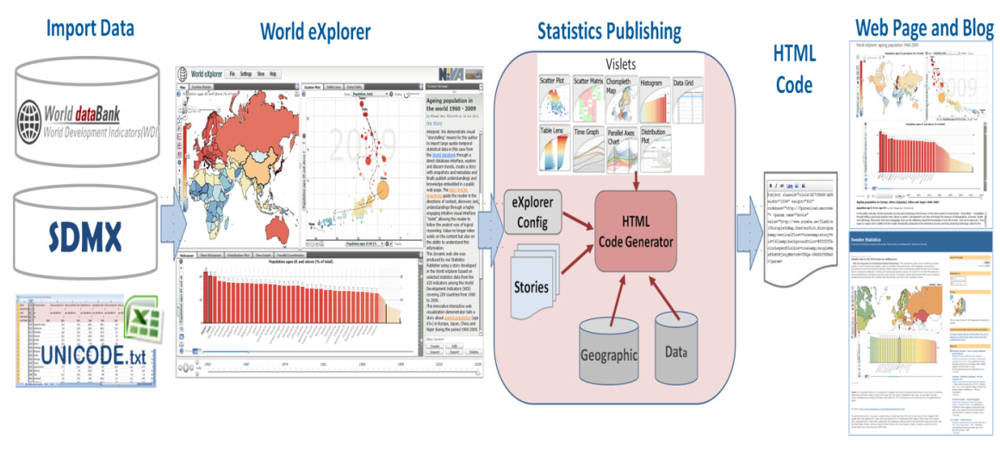
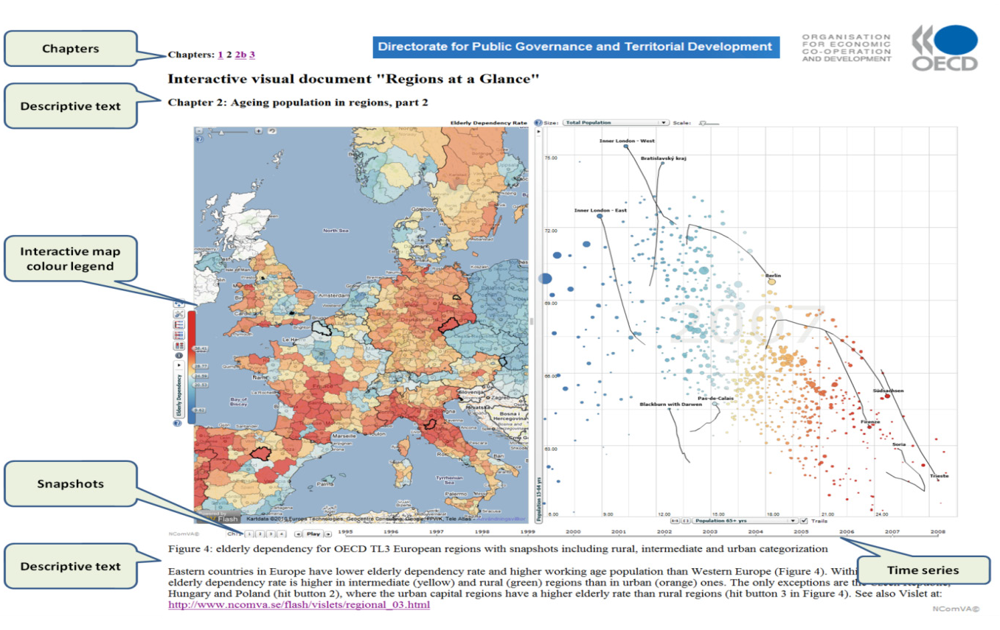
4.1.3. Method and Design

4.2. Overview of Findings in This Study
5. Conclusion
Acknowledgements
References
- Keim, D.A. Visual exploration of large data sets. Commun. ACM 2001, 44, 38–44. [Google Scholar]
- Gustavsson, B. Vad är Kunskap? En Diskussion om Praktisk Och Teoretisk Kunskap; 2002; Statens skolverk: Stockholm, Sweden. [Google Scholar]
- Kress, G.R. Multimodality a Social Semiotic Approach to Contemporary Communication; 2010; Routledge: London, UK. [Google Scholar]
- Kress, G.R. Literacy in the New Media Age; 2003; Routledge: London, UK. [Google Scholar]
- Keim, D.; Andrienko, G.; Fekete, J.-D.; Görg, C.; Kohlhammer, J.; Melançcon, G. Visual Analytics: Definition,Process,and Challenges Information Visualization; Kerren, A., Stasko, J., Fekete, J., North, C., Eds., Eds.; 2008; Information Visualization; Springer: Berlin/Heidelberg, Germany. [Google Scholar]
- Andrienko, G.; Andrienko, N.; Dykes, J.; Fabrikant, S.I.; Wachowicz, M. Geovisualization of dynamics, movement and change: Key issues and developing approaches in visualization research. Inf. Vis. 2008, 7, 173–180. [Google Scholar] [CrossRef]
- Tomaszewski, B. Producing geo-historical context from implicit sources: A geovisual analytics approach. Cartogr. J. 2008, 45, 165. [Google Scholar] [CrossRef]
- Andrienko, G.; Andrienko, N.; Demsar, U.; Dransch, D.; Dykes, J.; Fabrikant, S.R.; Jern, M.; Kraak, M.H.; Schumann, H.; Tominski, C. Space, time and visual analytics. Int. J. Geogr. Inf. Sci. 2010, 24, 1453–1600. [Google Scholar] [CrossRef]
- Jern, M. Collaborative Educational Geoanalytics Applied to Large Statistics Temporal Data. In. In Proceedings of CSEDU 2010—2nd International Conference on Computer Supported Education, Valencia, Spain, 7–10 April 2010.
- Sundin, O.; Julien, H.; Limberg, L.; Rieh, S.Y. Credibility and authority of information in learning environments. Proc. Am. Soc. Inf. Sci. Technol. 2008, 45, 1–5. [Google Scholar]
- Alexandersson, M.; Limberg, L.; Lantz-Andersson, A.; Kylemark, M. Textflytt och Sökslump—Informationssökning via Skolbibliotek; 2007; Myndigheten för skolutveckling: Stockholm, Sweden. [Google Scholar]
- Eds.; Lantz-Andersson, A.; Alexandersson, M.; Limberg, L. To be Lost and to be a Loser Through the Web. Handbook of Research on Digital Information Technologies: Innovations, Methods, and Ethical Issues; 2008; pp. 249–263. IGI Global: Hershey, PA, USA. [Google Scholar]
- Jedeskog, G. "Maila mig sen!": Lärarintentioner och Förändrade Gränser för Elevers Arbete; 2001; Linköping University: Linköping, Sweden. [Google Scholar]
- Jedeskog, G. Ny i Klassen - Förhållandet Mellan Lärarroll och Datoranvändning Beskrivet i Internationell Forskning; 2000; Ekelunds förlag: Solna, Sweden. [Google Scholar]
- de Jong, T.; Joolingen, W.R. Scientific discovery learning with computer simulations of conceptual domains. Rev. Educ. Res. 1998, 68, 179–201. [Google Scholar]
- Moreno, R.; Mayer, R.E. A coherence effect in multimedia learning: The case for minimizing irrelevant sounds in the design of multimedia instructional messages. J. Educ. Psychol. 2000, 92, 117–125. [Google Scholar] [CrossRef]
- Ainsworth, S.; Bibby, P.; Wood, D. Examining the effects of different multiple representational systems in learning primary mathematics. J. Learn. Sci. 2002, 11, 25–61. [Google Scholar] [CrossRef]
- Ainsworth, S. DeFT: A conceptual framework for considering learning with multiple representations. Learn. Instr. 2006, 16, 183–198. [Google Scholar] [CrossRef]
- Ainsworth, S. How Should We Evaluate Multimedia Learning Environments? In Understanding Multimedia Documents; Rouet, J., Lowe, R., Schnotz, W., Eds., Eds.; 2008; Springer: New York, NY, USA. [Google Scholar]
- Åström, T.; Jern, M.; Lundblad, P.; Ho, Q. A web-enabled visualization toolkit for geovisual analytics visualization and data analysis. Proc. SPIE 2011, 7868. [Google Scholar] [CrossRef]
- Sweller, J. Cognitive load during problem solving: Effects on learning. Cogn. Sci. 1988, 12, 257–285. [Google Scholar] [CrossRef]
- Sweller, J.; Merrienboer, J.J.G.; Paas, F.G.W.C. Cognitive architecture and instructional design. Educ. Psychol. Rev. 1998, 10, 251–296. [Google Scholar] [CrossRef]
- Mayer, R.E.; Moreno, R. A split-attention effect in multimedia learning: Evidence for dual processing systems in working. J. Educ. Psychol. 1998, 90, 312–320. [Google Scholar] [CrossRef]
- Mayer, R.E.; Moreno, R. Aids to computer-based multimedia learning. Learn. Instr. 2002, 12, 107–119. [Google Scholar] [CrossRef]
- Moreno, R.; Mayer, R.E. Designing Multimedia Presentations with Animation: What Does the Research Say? In Proceedings of IEEE Multimedia Systems 1999, Florence, Italy, 7–11 June 1999.
- Goldman, S. Learning in complex domains: When and why do multiple representations help? Learn. Instr. 2003, 13, 239–244. [Google Scholar] [CrossRef]
- Vygotskij, L.S. Mind in Society: The Development of Higher Psychological Processes; Cole, M., Ed., Eds.; 1978; Harvard University Press: Cambridge, MA, USA. [Google Scholar]
- Vygotsky, L. Thought and language. Ann. Dyslexia 1964, 14, 97–98. [Google Scholar]
- Wertsch, J.V. Vygotsky and the Social Formation of Mind; 1985; Harvard University Press: Cambridge, MA, USA. [Google Scholar]
- Vygotskij, L.S. Thought and Language; Kozulin, A., Ed., Eds.; 1986; MIT Press: Cambridge, MA, USA. [Google Scholar]
- Wertsch, J.V. Mind as Action; 1998; Oxford University Press: New York, NY, USA. [Google Scholar]
- Driscoll, M.P. Psychology of Learning for Instruction: Learning and Instructional Technology; 1993; Allyn and Bacon: Boston, MA, USA. [Google Scholar]
- Gallimore, R.; Tharp, R.G. Rousing Minds to Life: Teaching,Learning,and Schooling in Social Context; 1988; Cambridge University Press: Cambridge, MA, USA. [Google Scholar]
- Prizant, B.M.; Crais, E.R.; Wetherby, A.M.; Kublin, K.S. Prelinguistic Dynamic Assessment: A Transactional Perspective. In Transitions in Prelinguistic Communication; Wetherby, A.M., Warren, S.F., Reichle, J., Eds., Eds.; 1989; pp. 285–289. Paul H. Brookes: Baltimore, MD, USA. [Google Scholar]
- Säljö, R. Lärande i Praktiken - ett Sociokulturellt Perspektiv; 2010; Norstedt: Stockholm, Sweden. [Google Scholar]
- Gibson, J.J. Våra Sinnen som Perceptuella System; 1969; Beckman: Stockholm, Sweden. [Google Scholar]
- Jewitt, C. Technology,Literacy and Learning: A Multimodal Approach; 2005; Routledge: New York, NY, USA. [Google Scholar]
- Kress, G.R.; Selander, S. Design för Lärande: Ett Multimodalt Perspektiv; 2010; Norstedt: Stockholm, Sweden. [Google Scholar]
- Berger, A.A. Media and Communication Research Methods: An Introduction to Qualitative and Quantitative Approaches; 2011; SAGE Publications: Thousand Oaks, CA, USA. [Google Scholar]
- Bandura, A. Social Foundations of Thought and Action: A Social Cognitive Theory; 1986; Prentice-Hall: Englewood Cliffs, NJ, USA. [Google Scholar]
- Moreno, R. Decreasing cognitive load for novice students: Effects of explanatory versus corrective feedback in discovery-based multimedia. Instr. Sci. 2004, 32, 99–113. [Google Scholar] [CrossRef]
- Van Leeuwen, T. Discourse and Practice: New Tools for Critical Discourse Analysis; 2008; Oxford University Press: New York, NY, USA. [Google Scholar]
- Jern, M.; Stenliden, L. Educating Official Statistics Using Geovisual Analytics Storytelling Methods. In. In Proceedings INTED2010; International Association of Technology,Education and Development (IATED).
- Rystedt, H. ,Säljö,R.,Eds. Kunskap och Människans redskap: Teknik och Lärande; 2008; Studentlitteratur: Stockholm, Sweden. [Google Scholar]
- Eds.; Luff, P.; Heath, C. Technology-in-Action; 2000; Cambridge University Press: New York, NY, USA; Cambridge, UK. [Google Scholar]
- Gil, A.; Bruner, J.S. The Relevance of Education; 1971; Norton: New York, NY, USA. [Google Scholar]
- Talja, S. Jean Lave’s Practice Theory. In Critical Theory for Library and Information Science: Exploring the Social from Across the Disciplines; Eds., Buschman, J.E., Given, L.M., Leckie, G.J., Eds.; 2010; Libraries Unlimited: Santa Barbara, CA, USA. [Google Scholar]
© 2012 by the authors; licensee MDPI, Basel, Switzerland. This article is an open-access article distributed under the terms and conditions of the Creative Commons Attribution license (http://creativecommons.org/licenses/by/3.0/).
Share and Cite
Stenliden, L.; Jern, M. How Can We Study Learning with Geovisual Analytics Applied to Statistics? Future Internet 2012, 4, 22-41. https://doi.org/10.3390/fi4010022
Stenliden L, Jern M. How Can We Study Learning with Geovisual Analytics Applied to Statistics? Future Internet. 2012; 4(1):22-41. https://doi.org/10.3390/fi4010022
Chicago/Turabian StyleStenliden, Linnea, and Mikael Jern. 2012. "How Can We Study Learning with Geovisual Analytics Applied to Statistics?" Future Internet 4, no. 1: 22-41. https://doi.org/10.3390/fi4010022
APA StyleStenliden, L., & Jern, M. (2012). How Can We Study Learning with Geovisual Analytics Applied to Statistics? Future Internet, 4(1), 22-41. https://doi.org/10.3390/fi4010022



